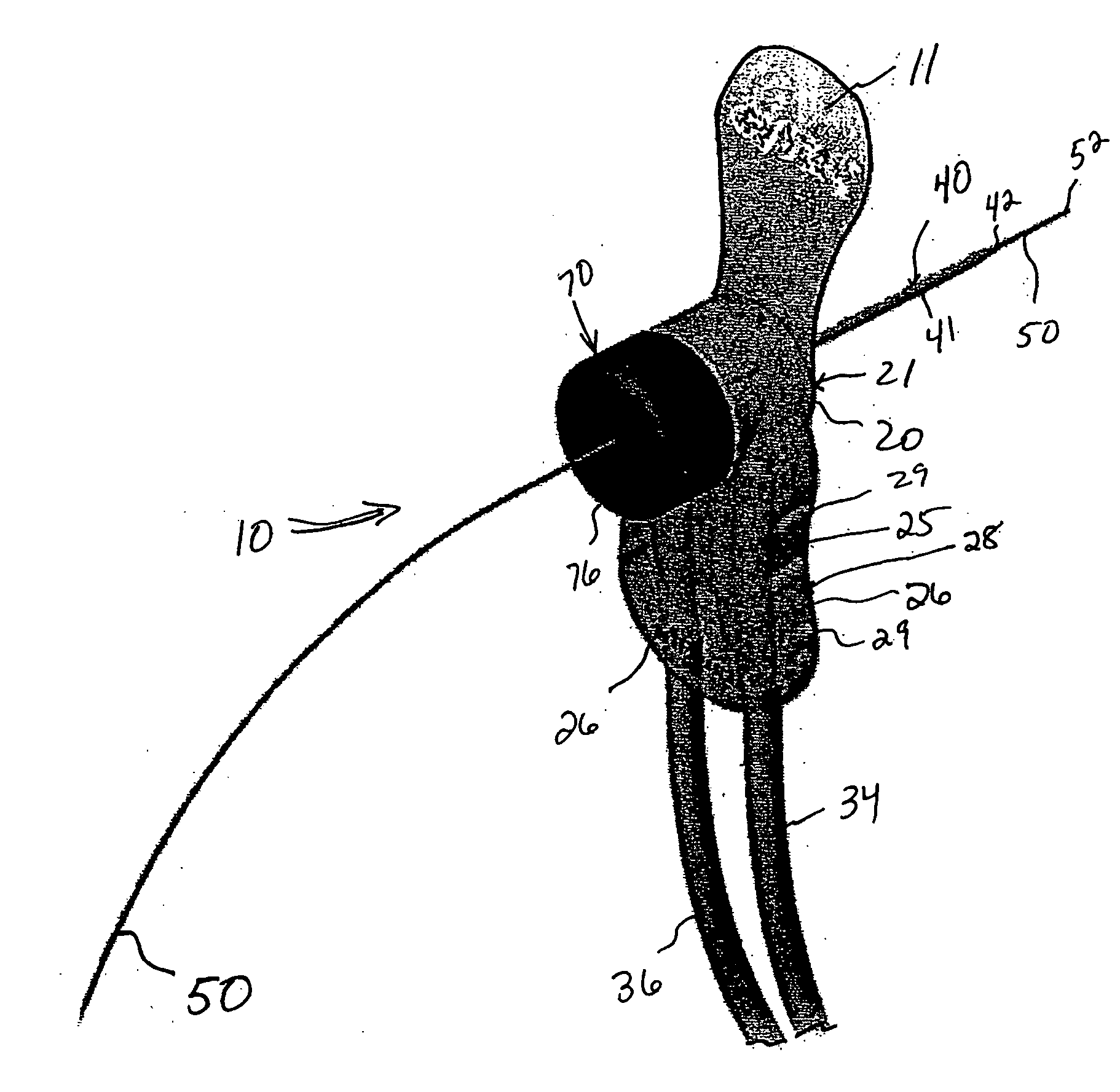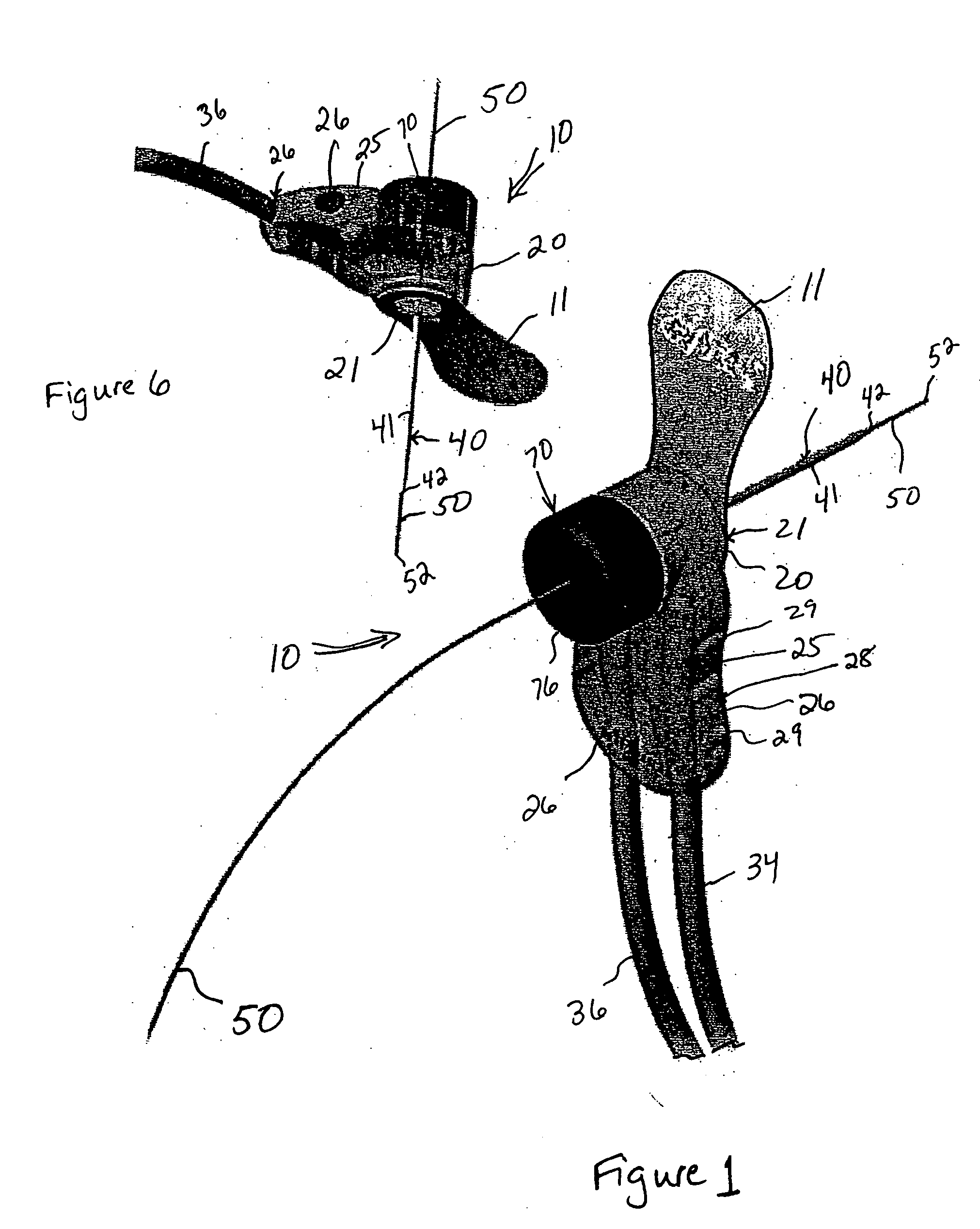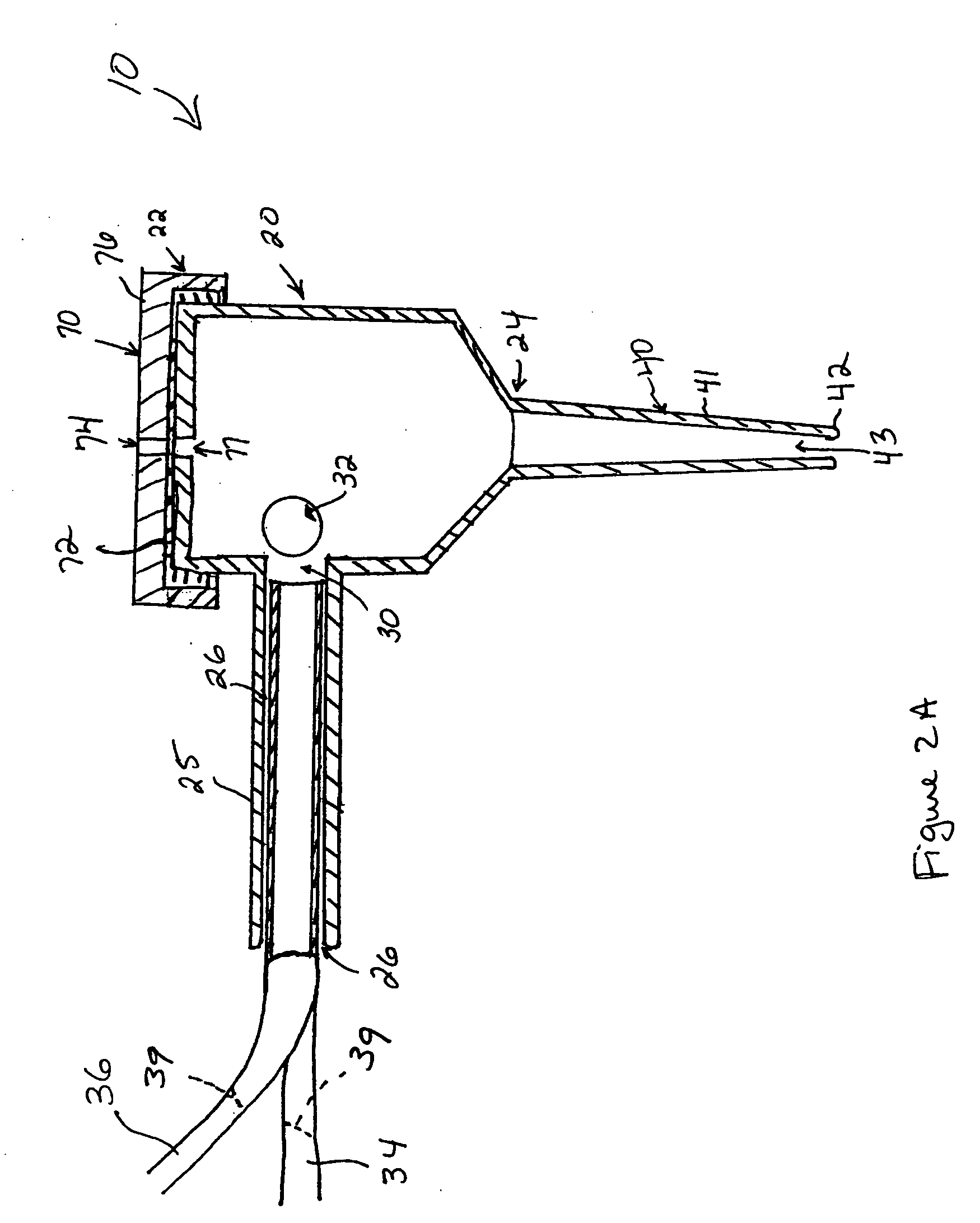Medical instrument for accessing a breast duct for performing a medical procedure
- Summary
- Abstract
- Description
- Claims
- Application Information
AI Technical Summary
Benefits of technology
Problems solved by technology
Method used
Image
Examples
Embodiment Construction
[0021]FIG. 1 illustrates an embodiment of a low profile, single lumen medical instrument 10 for performing a medical procedure within a breast duct. As used herein, the phrase “medical procedure” may include preparatory procedures, diagnostic procedures or therapeutic procedures. These procedures could include the steps of delivering material(s) into the breast duct and / or retrieving material(s) from within the breast duct.
[0022] In an embodiment, the medical instrument 10 may be used to infuse ductal wash fluid delivered to the manifold hub 20 into the breast duct, and collect or draw up ductal fluid samples, including hundreds of ductal epithelial cells and / or cell clusters of greater than ten cells, from within the breast duct for analysis. In another embodiment, the medical instrument 10 may be used to infuse a diagnostic agent or therapeutic agent into a breast duct. As shown in FIGS. 1-8, the instrument 10 may also include a member 11 for securing the instrument 10 to a patie...
PUM
 Login to View More
Login to View More Abstract
Description
Claims
Application Information
 Login to View More
Login to View More - R&D
- Intellectual Property
- Life Sciences
- Materials
- Tech Scout
- Unparalleled Data Quality
- Higher Quality Content
- 60% Fewer Hallucinations
Browse by: Latest US Patents, China's latest patents, Technical Efficacy Thesaurus, Application Domain, Technology Topic, Popular Technical Reports.
© 2025 PatSnap. All rights reserved.Legal|Privacy policy|Modern Slavery Act Transparency Statement|Sitemap|About US| Contact US: help@patsnap.com



